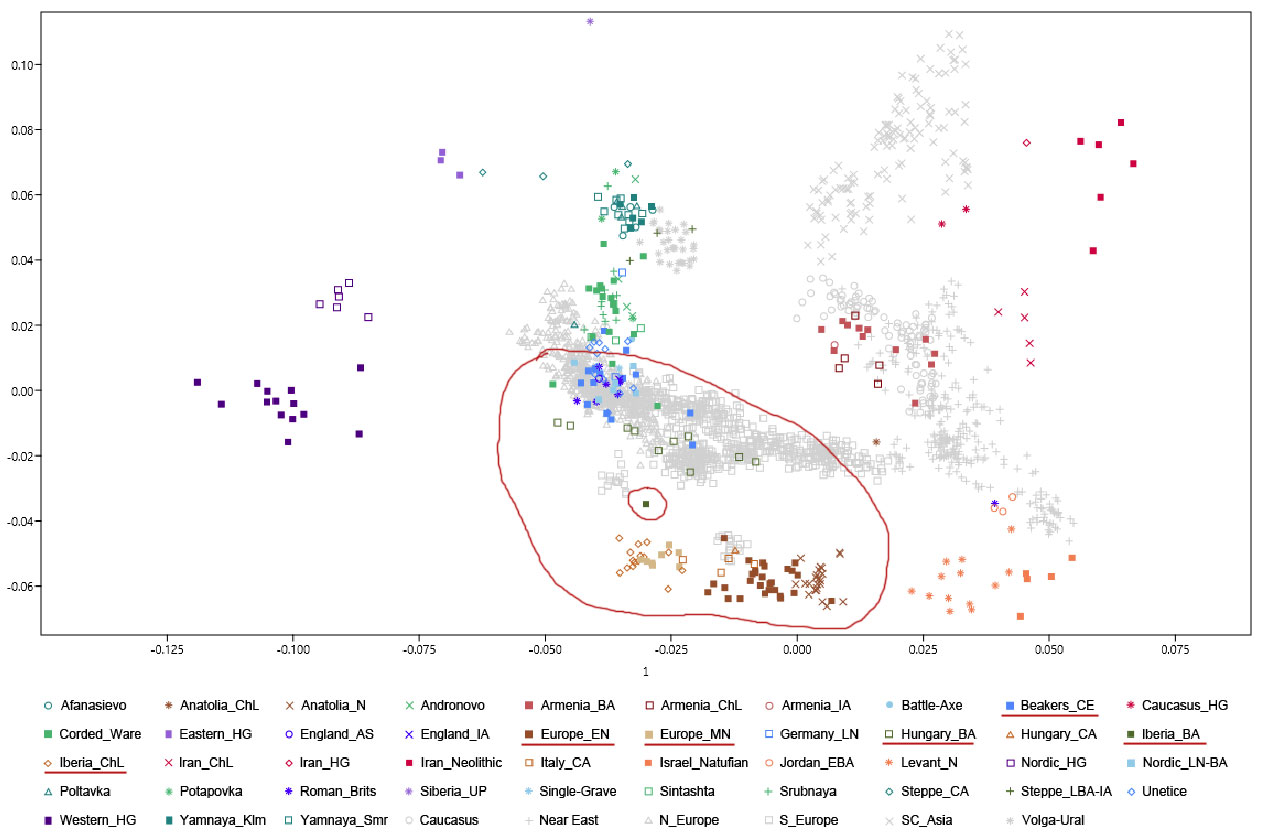This year's ancient DNA results provide even more convincing evidence that German and Iberian populations during the Bell Beaker period were ethnically distinct. Have a look at this PCA chart made by David from Eurogenes. I have circled and underscored the relevant data.
What we see is that Chalcolithic Iberians were ethnically indistinguishable from Middle Neolithic Iberians, who are slightly more admixed with WHG than Early Neolithic Iberians. There was no significant population change between the Neolithic and Chalcolithic in the Iberian peninsula, which means that there was genetic continuity throughout the Megalithic and Bell Beaker periods in the peninsula. This also means that the Bell Beaker phenomenon, if it started in Iberia as current archaeological evidence suggests, was not a foreign element brought by Steppe people, but was native of Megalithic Europe, as I have always said since I made the
migration maps and wrote the original R1b article in 2009.
R1b Steppe people who invaded Central Europe eventually continued their migration to Iberia in the Bronze Age, where they mixed with the local Chalcolithic population. Bronze Age Iberians are perfectly intermediary between Early Bronze Age Central Europeans (including German R1b) and Middle/Late Neolithic and Chalcolithic Iberians.
Therefore it is clear that:
1) The Bell Beaker phenomenon was not an ethnic culture like Neolithic and Bronze Age cultures such as LBK, Cardium Pottery, Yamna or Corded Ware, but really just a trade network between completely unrelated peoples, just as I posited in this thread two years ago.
2) R1b people descended from Steppe invaders only reached Iberia in the Bronze Age, and not in the Chalcolithic as some suggested.
3) There doesn't seem to have been a significant migration of newcomers who brought copper metallurgy to Iberia from the Balkans or the Near East. So the Copper Age was most likely not spread by J2 or R1b-L23 people, but - in Iberia at least - evolved directly from the native G2a + I2 + E1b1b population from Neolithic Iberia.


